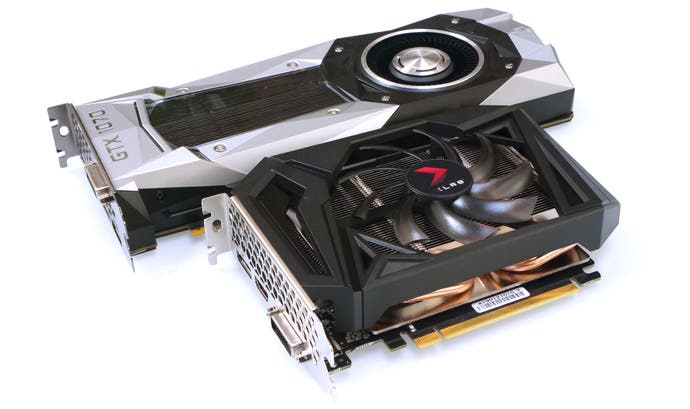Nvidia GeForce GTX 1660 Ti: the Digital Foundry verdict
No ray tracing, but great performance for the price.
It's difficult not to like the GeForce GTX 1660 Ti. Nvidia is aiming this product at 1080p gamers and in this respect, I find its performance profile to be very well-judged, simply because the laws of diminishing returns start to kick in when you run anything faster at full HD resolution, where the CPU starts to have a limiting factor on graphics performance.
Suffice to say, if we're hitting CPU limits in some games with the overclocked Intel Core i7 8700K we use in our test set-up, you can assume that it will be even more of an issue for the mainstream gamer more likely to be using i5-level hardware. The GTX 1660 Ti isn't the fastest GPU by any means, but it's a great 1080p performer that's less likely to be bottlenecked by other system components, meaning you're getting more of the performance you paid for if you're using a full HD display.
Of course, as it is broadly in the same power band as the GTX 1070 and GTX 980 Ti, it's also a capable performer at 1440p - if somewhat off the pace compared to the RTX 2060 and to a lesser extent, the Vega 56. However, this is nothing that some settings tweaks can't resolve. On top of that, the GTX 1660 Ti also features more raw GPU power than Xbox One X, so a combination of realistic settings adjustments and judicious use of internal resolution scaling options could see the card cope fairly well even when paired with a 4K display. We had some issues testing Wolfenstein: The New Colossus's adaptive shading technology with the 1660 Ti, but I can confirm that the feature is supported and the performance uptick - especially in less complex scenes - is palpable. Our fingers are crossed that more titles support this impressive technology further on down the road.
On top of that, I also like the power efficiency delivered by the new product. Even with my overclocked 8700K, total system power consumption during general gaming is in the 220W-230W range. The benchmarks suggest that we have a capable performer offering frame-rates in GTX 1070 territory, but when you lay the new card next to the old one, there's a night and day difference in terms of form factor.

The XLR8 card we were sent for review is absolutely tiny, and it's not the exception either - small form factor cards similar to this one will be available from Palit, EVGA, Gainward and Asus. The fan is a little too loud on the PNY card we reviewed, so those looking for a quieter experience may prefer one of the twin-fan cooler cards also available. Regardless though, I really like the way that this level of graphics performance is available in a range of sizes and those opting for the smaller cards aren't paying any price premium either - we're informed that the XLR8 is one of a number of GTX 1660 Ti products available (in the UK at least) at the £259 starting price.
Criticisms? It's difficult to be overly harsh here, but there is a small gen-on-gen bump in price across all territories - I can't help but feel that if Nvidia had delivered the 1660 Ti's 35-40 per cent increase in performance over GTX 1060 at the same price as the old Pascal card, it would have generated a ton of good will and would have made the choice between 1660 Ti and AMD rivals RX 590 and Vega 56 something of a no-brainer. Also, there's a pretty close correlation between RTX 2060's extra price and its higher performance level - and it also opens the door to the full RTX feature set. If you can stretch to a 2060 - especially if you're aiming for 1440p gaming - that's the card I'd recommend.
With all of that said, there's no denying that the value is there for the performance you're getting and with prospective GTX 1660 non-Ti and even GTX 1650 models now being rumoured, the chances are that today's new GeForce product isn't the end of Nvidia's plans for the more value-orientated gamer. However, in the meantime, the GTX 1660 Ti is well worth consideration.
Nvidia GeForce RTX 1660 Ti Analysis
- Introduction, Hardware Breakdown
- Assassin's Creed Odyssey/Unity, Battlefield 1 - Performance Analysis Part 1
- Crysis 3, Far Cry 5, Ghost Recon Wildlands - Performance Analysis Part 2
- Rise of the Tomb Raider, Shadow of the Tomb Raider, The Witcher 3 - Performance Analysis Part 3
- Nvidia GeForce GTX 1660 Ti - the Digital Foundry verdict [This Page]
